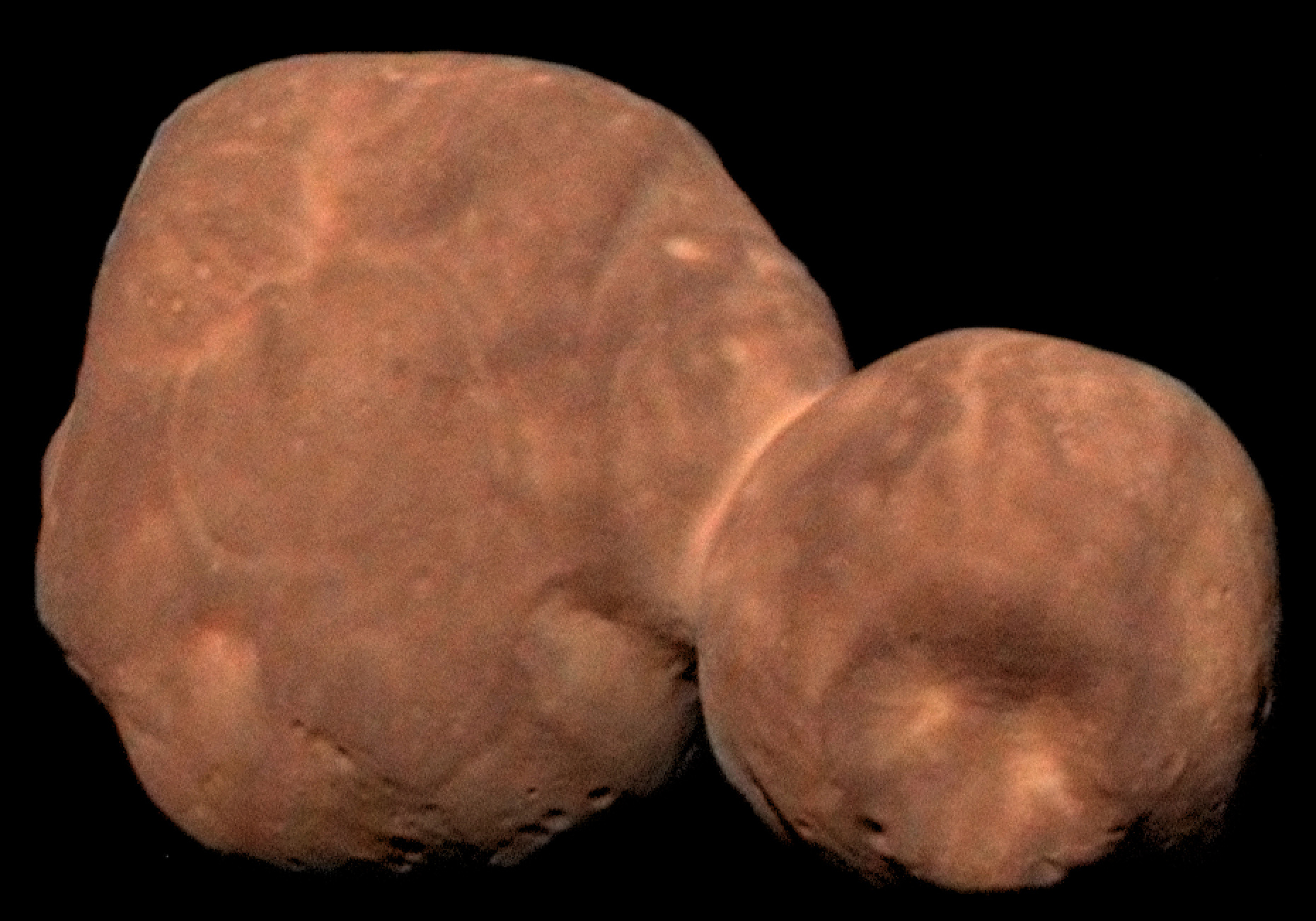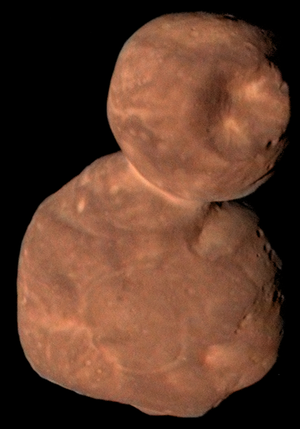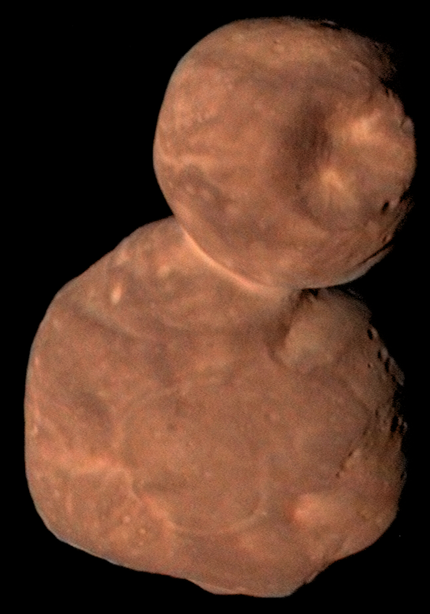Text written in Basque and translated automatically by Elia without any subsequent editing. SEE ORIGINAL
Harroth's deep study helps to discover the origin of planetesimals
2020/02/13 Gallego Moya, Juanma - Kazetaria Iturria: Elhuyar aldizkaria

Harroth. - Ed. NASA/Johns Hopkins University Applied Physics Laboratory/Southwest Research Institute/Roman Tkachenko
A group of researchers confirmed that the ultramarine object, known as Ultima Thule until November last year, emerged from the union of two planetesimales. It is clarified that the formation of the object was not a consequence of a shock but of a gravitational approach performed "gently". To corroborate this idea, among other things, they argue that they have found no indication of deformation in the union of the two lobes that make up Arrokoth. This has been explained by scientists in three scientific articles presented in the journal Science in which they offer new data on the farthest object ever visited by man. On 1 January 2019 the New Horizons probe approached 3,500 kilometers from Arrokoth, allowing it to reach a resolution of 33 meters per pixel in images. This has allowed researchers to know the geological characteristics of this small body. Among other things, they have explained that Harroth's skin is relatively soft and therefore believe that it has changed little since its birth. Based on the observed craters, they have calculated that it was formed four billion years ago. According to spectrography, there are methanol and other organic molecules not identified for the moment and, although they suspect that there is water, they have not been able to identify it for the moment.As for their formation, they consider that it was born in a cloud of local collapse that formed inside the solar nebula, and not from the clash between distant objects, as protected by the theory of hierarchical acrecition. When Harroth is so far away, it has taken a long time to collect all the collected data. In May last year, the first studies on the object were presented based on the data obtained to date. Now, however, the number of data they have had has been ten times higher.

eu es fr en ca gl
Gai honi buruzko eduki gehiago
Elhuyarrek garatutako teknologia





